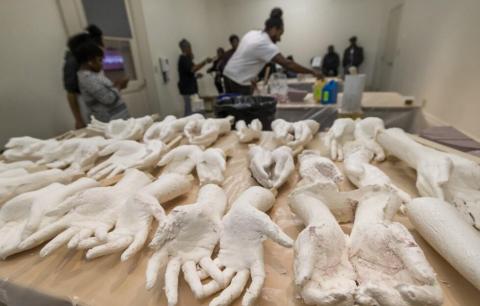Stories of slaves rewritten with DNA research

In the 1700s, a boy was born into slavery in Colonial America. He spent his life working in the coastal city of Charleston, South Carolina. And when he died in middle age, he was buried alongside 35 other slaves.
That's the likely history that researchers have uncovered for the man - there's no written record for him or the others buried at the long-forgotten site. Their names have been lost, along with any details of their lives. But their stories are now being told through what was left behind: bones, teeth and, especially, DNA.
In recent decades, advances in DNA research have allowed scientists to use ancient remains and peer into the lives of long-dead people. In Charleston, that's meant tracing some of the African roots that were cut off by slavery.
"We're bringing their memory back to life," said Raquel Fleskes, an anthropologist at the University of Connecticut who studied the remains. "This is a way of restoring dignity to individuals that should've always had this dignity."
The Charleston project started a decade ago, when construction workers unearthed the remains beneath the grounds of the Gaillard Center, an arts venue in the city that was going through an expansion.
Dating back to the second half of the 18th century, the remains are believed to be mostly from enslaved people of African descent who lived nearby. A few of them were likely among the estimated 175,000 Africans brought through Charleston's port, a hub for the trans-Atlantic slave trade.
The city reburied the remains at the site, where a memorial fountain is planned. But with few recorded details available, community members were also interested in using science to learn more about the people, Fleskes said.
So, the Anson Street African Burial...
- Log in to post comments
